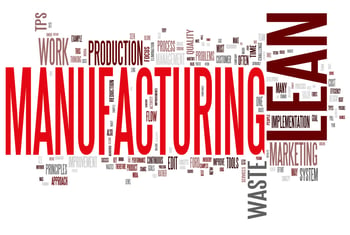October 22, 2015 | Lean
8 Things Your Boss Wishes You Knew About Lean Manufacturing
you're probably aware that Lean Manufacturing
has played a major role in
the manufacturing industry,
such how Toyota
 adopted and implemented
adopted and implemented Lean philosophy in its production systems.
The core idea of going lean is to eliminate waste within the manufacturing cycle. Diving deeper into Lean’s practices and philosophy, the general concept is change on many levels, causing Lean adopters to form assumptions or misconceptions about what going Lean entails.
Outlined below are eight things your boss wishes you knew about Lean Manufacturing that can clarify and ease the Lean adoption process.
Your Boss’s Lean Wish List
- Lean: a continual pursuit
The decision to go lean may happen in a week’s time, but that does not mean that the lean implementation is completed with such speed. For example, Toyota’s implementation of lean can be traced back to the early 1900’s, and is still being pursued.
Going lean is not an overnight process, but rather a continuous one. Lean manufacturing requires ongoing evaluation and changes, as needed to ensure efficient manufacturing.
- It’s a leaner process, not a leaner paycheck
Implementing a lean manufacturing process does not mean that layoffs or reduced pay necessarily come along with it. Going lean refers to eliminating the "fatty" parts of a manufacturing process, not the employee count.
- Employees work more efficiently
Lean manufacturing is about efficiency in the manufacturing process. An organization's employees establish levels of efficiency throughout manufacturing. Going lean does not dictate that employees need to work harder or faster; rather, it ensures they work smarter for optimal efficiency.
- Does not eliminate software
The aim of going lean is not to eliminate all resources used in the manufacturing process; instead, the aim is to use those resources to eliminate the waste around and used with manufacturing software.
- Beyond the factory
Lean principles extend past the factory room and are applicable to product delivery, the office, inventory, etc. which are also subject to, and benefit from, lean implementation.
- It takes a village
Lean manufacturing is not a one man operation; it is built on a cultural change within the entirety of an organization. Lean fundamentally uproots the original manufacturing process to provide more efficient processes throughout the organization.
- The 5 principles for Lean’s success
Generally, there are five main principles that determine the success of lean implementation.
These are:
- Understand value as defined by the customer
- Define the value stream for the organization
- Establish continuous flow within the organization
- Maintain the flow through the use of a pull system
- Pursue perfection through continuous process improvement
- Lean is a tool
Lean manufacturing offers tools used for a more efficient manufacturing process. At surface value, lean is a manufacturing style that evaluates concentrated areas of the manufacturing process and removes waste to create a more efficient manufacturing cycle. Lean is not just a manufacturing style, it is a tool kit. CMTC offers a lean manufacturing toolkit including tools such as:
- Simulation: a hands-on learning of key principles
- Mistake Proofing: work aids to prevent errors
- 6S: organize work space to reduce waste and improve safety
- Scorecard: track progress to baseline
- Pull System: pace work to customer needs
- Visual Factory: display notifications for rapid response
Being educated and knowing the benefits of going lean, what the purpose of lean Manufacturing is, and why it is a successful tool and style in the manufacturing industry are just a few things that your boss would want you to know about lean and how it can help your business thrive.

